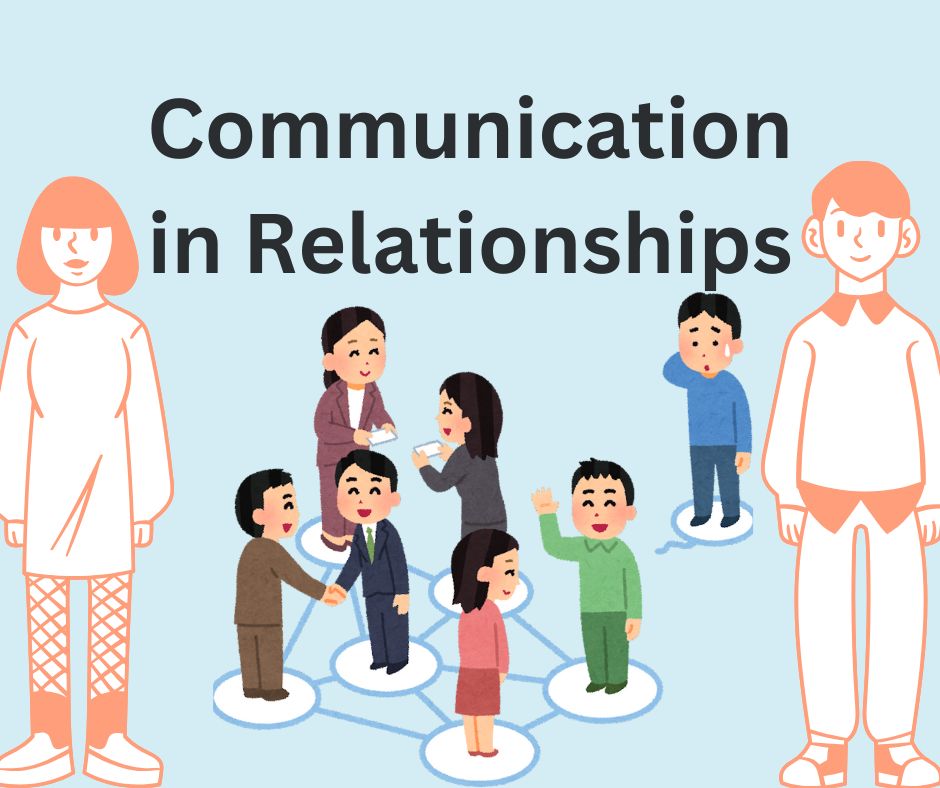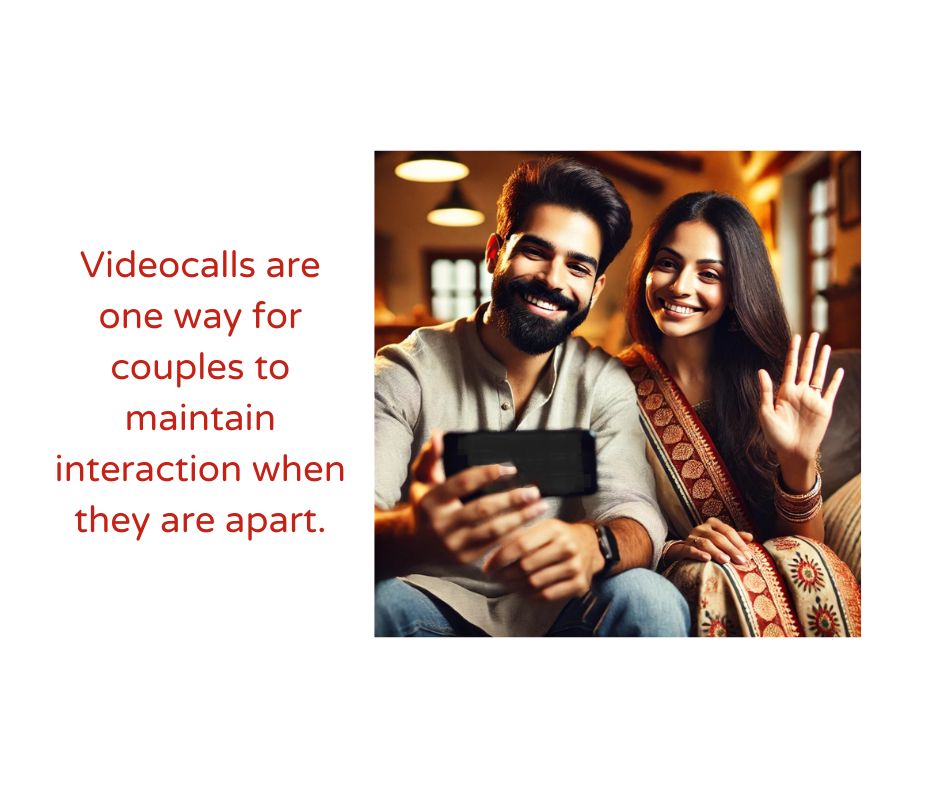
Communication in relationships. Created using Canva
Communication is key to any successful relationship. Whether it is a romantic partnership, friendship, or family bond, the way we communicate determines the strength and longevity of the connection. Good communication builds understanding, trust, and closeness, while bad communication leads to misunderstandings, resentment, and conflict. We had written on the silent signs of disconnection in a previous article and given tips to strengthen your relationship. This article explores why communication is important in relationships, common barriers to effective communication, and practical tips for improving your connection with your partner.
The Importance of Communication in Relationships
Communication is more than just exchanging words; it is about conveying emotions, needs, and intentions. Good communication helps partners feel heard and valued, strengthening emotional closeness.
Couples who communicate well have higher relationship satisfaction and can handle challenges better.
Gottman & Silver, 1999
Poor communication can cause relationships to break down. Misunderstandings, unresolved conflicts, and emotional distance often come from bad communication patterns. For example, criticism, defensiveness, stonewalling, and contempt—called the “Four Horsemen of the Apocalypse” by relationship expert John Gottman—are toxic behaviours that can predict relationship failure (Gottman, 1994).
Common Barriers to Effective Communication
In the Indian context, where cultural norms and family dynamics often play a significant role in relationships, assumptions and mind-reading can be particularly common, especially in the early years of a marriage or partnership.
Robin and Priya are a newly married couple living in a joint family in Mumbai. Robin works long hours at a corporate job, while Priya, who recently moved to the city after marriage, is still adjusting to her new life. One evening, Robin comes home late from work, exhausted and preoccupied with an upcoming project deadline. Priya, who has been waiting to spend time with him, feels neglected and assumes that Robin doesn’t care about her or prioritise their relationship.
Instead of expressing her feelings, Priya stays silent, thinking, “If he really loved me, he would know how I feel and make time for me.” Meanwhile, Robin, unaware of Priya’s emotions, assumes she is upset because he didn’t bring her a gift or because she doesn’t understand the pressures of his job. He thinks, “She’s new to the city and doesn’t realise how demanding my work is. She’ll adjust eventually.”
The Outcome: Days pass, and neither Robin nor Priya communicates their feelings or perspectives. Priya grows increasingly resentful, feeling lonely and unimportant, while Robin becomes frustrated, believing Priya is being unreasonable. This lack of communication leads to unnecessary tension and arguments, creating a rift in their relationship.
Therefore, before diving into tips for better communication, it is important to recognise the barriers that can hinder connection:
Assumptions and Mind Reading: Assuming you know what your partner is thinking or feeling without asking can lead to misunderstandings. Mind reading often results in incorrect interpretations and unnecessary conflicts, especially in the initial years of a relationship.
Emotional Reactivity: When emotions run high, it is easy to say things we do not mean or shut down completely. Reacting impulsively can escalate conflicts and prevent productive dialogue.
Lack of Active Listening: Many people listen to respond rather than to understand. Interrupting, planning your rebuttal, or tuning out can make your partner feel unheard.
Nonverbal Miscommunication: Body language, tone of voice, and facial expressions often convey more than words. Inconsistent nonverbal cues can create confusion and mistrust.
Unresolved Past Issues: Lingering resentment or unresolved conflicts from the past can taint present communication, making it difficult to address current issues constructively.
Tips for Better Communication in Relationships
How can you communicate better in relationships? Improving communication in relationships requires intentionality and practice. Below are evidence-based tips to help you build a stronger connection with your partner:
1. Practise Active Listening
Active listening involves fully focusing on your partner and responding thoughtfully. To practise active listening:
- Maintain eye contact.
- Avoid interrupting or formulating your response while they’re speaking.
- Reflect on what you have heard to ensure understanding.
Active listening enhances empathy and reduces misunderstandings.
Weger et al., 2014
2. Use “I” Statements
Instead of blaming or criticising your partner, express your feelings and needs using “I” statements. A study by Rogers and others (2018) looked at how the way we phrase things during a conflict can affect how the other person reacts. It focused on two key ideas: using “I-language” instead of “you-language” and made an effort to acknowledge the other person’s perspective. “I-language” (like saying “I feel frustrated when this happens”) makes it clear you are talking about your own emotions, rather than blaming the other person. However, “you-language” (such as “You never listen to me”) can make the other person feel attacked, leading to a defensive reaction. The study also found that when people take the time to acknowledge both their own and the other person’s perspective, conversations are far less likely to turn hostile.
To test these ideas, researchers asked people to read different conflict scenarios and rate how likely they thought the recipient of each statement would react defensively. Unsurprisingly, they found that people reacted better to I-language than to you-language, and that the best approach was to combine I-language with an effort to understand the other person’s viewpoint. This approach helped keep conversations constructive and prevented arguments from escalating. Essentially, small tweaks in the way we phrase things can make a huge difference in keeping conflicts from turning ugly.
3. Be Mindful of Nonverbal Communication
Your body language, tone of voice, and facial expressions should align with your words. A gentle tone and open posture can convey warmth and receptivity, while crossed arms or a harsh tone can signal defensiveness or hostility. It may be difficult to be mindful of your body language in the heat of the moment, but being aware of this can help you regulate your physical reactions to a certain degree.
4. Schedule Regular Check-Ins
Life can get busy, and meaningful conversations often take a backseat. Schedule regular check-ins with your partner to discuss your relationship, share feelings, and address any concerns. This practice fosters emotional intimacy and prevents issues from festering.
5. Practise Empathy
Empathy is the ability to put yourself in your partner’s shoes and understand their perspective.To cultivate empathy, ask yourself, “How would I feel in their situation?”
Empathy strengthens emotional bonds and reduces conflict.
Davis et al., 2015
6. Manage Conflict Constructively
Conflict is inevitable in relationships, but it doesn’t have to be destructive. Use these strategies to manage conflict effectively:
- Take a break if emotions escalate, and revisit the conversation when both of you are calmer.
- Focus on the issue at hand rather than bringing up past grievances.
- Seek compromise and prioritise the relationship over being “right.”
7. Express Appreciation and Gratitude
Expressing gratitude and appreciation to your partner strengthens your bond. A study by Algoe and Zhaoyang (2016) examined its impact on personal and relationship well-being. Couples took part in a month-long experiment, either expressing gratitude or engaging in another relationship activity. The results showed that the benefits of gratitude depended on how responsive the partner seemed. Those who felt their partners were highly responsive experienced greater improvements in well-being. In contrast, when partners seemed less responsive, expressing gratitude had little effect.
8. Seek Professional Help if Needed
If communication challenges persist, consider seeking help from a couples therapist. A trained professional can provide tools and strategies to improve communication and resolve underlying issues.
The Role of Technology in Communication
Technology plays a significant role in how we communicate with our partners. While texting and video calls can help maintain connection, they can also lead to misunderstandings due to the lack of nonverbal cues. To use technology effectively:
- Avoid having important or sensitive conversations over text.
- Use video calls to maintain face-to-face interaction when apart.
- Set boundaries around screen time to ensure quality time together.

Conclusion
The article tells you how to communicate better in your relationships. By practising active listening, using “I” statements, validating emotions, and managing conflict constructively, you can build a stronger connection with your partner. Remember, communication is a skill that improves with practice and effort. Prioritise open and honest dialogue, and do not hesitate to seek professional support if needed. With commitment and mutual respect, you can create a relationship that thrives on understanding and connection.
Join the Rematch app where we have made communicating with your potential match easy with in-built prompts and detailed questionnaires.
References
Algoe, Sara B., and Ruixue Zhaoyang. “Positive Psychology in Context: Effects of Expressing Gratitude in Ongoing Relationships Depend on Perceptions of Enactor Responsiveness.” Journal of Positive Psychology 11, no. 4 (2016): 399–415. https://doi.org/10.1080/17439760.2015.1117131.
Davis, Mark H., et al. “Empathy and Social Functioning.” Journal of Personality and Social Psychology 108, no. 1 (2015): 149–171.
Gottman, John M. Why Marriages Succeed or Fail. New York: Simon & Schuster, 1994.
Gottman, John M., and Nan Silver. The Seven Principles for Making Marriage Work. New York: Harmony Books, 1999.
Rogers, Timothy B., Jennifer Howieson, and Craig Neame. “I Understand You Feel That Way, but I Feel This Way: The Benefits of I-Language and Communicating Perspective During Conflict.” PeerJ 6 (2018): e4831. https://doi.org/10.7717/peerj.4831.
Weger, Harry, et al. “The Role of Active Listening in Interpersonal Influence.” International Journal of Listening 28, no. 1 (2014): 13–31.

